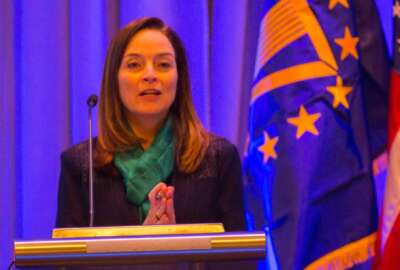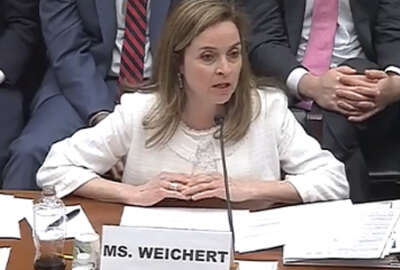
Trump administration wants more agencies to help ‘connect the dots’ on workforce modernization priorities
The Trump administration wants to bring more agencies to collaborate on the goals outlined in the President's Management Agenda in 2019.
As the Trump administration looks to 2019 to make more progress on the President’s Management Agenda and its goals for a more modern federal workforce, top human capital leaders are encouraging more agencies to join the cause.
Margaret Weichert, deputy director for management at the Office of Management and Budget and acting Office of Personnel Management director, said the administration would focus on fewer workforce modernization initiatives that will have more impact across a wider group of people.
Shortening the hiring process, reskilling the existing federal workforce and improving employee engagement and performance management are still top priorities for the Trump administration, but the change will come more in how agencies collaborate and work with one another to tackle these challenges, Weichert said in an interview with Federal News Network last month.
“I have a strongly held belief that the reason we haven’t made progress on many of the challenges facing government is because we’ve looked at them either on a siloed functional basis or we haven’t drawn enough conclusions about what are the blockers that are systemic above the level of any given agency,” she said.
In 2019, the administration will focus more on “connecting the dots” on the work that many of the executive councils and agencies have been doing on their own. The goal, Weichert said, is to bring those disparate efforts together to solve more systemic workforce challenges across government.
The Chief Human Capital Officers Council met with the Chief Information Officers Council late last month, Weichert said, to discuss further how they might continue to find ways to reskill federal employees for new kinds of emerging work.
“Reskilling” has become one of the many new buzz words in the federal community in 2018 and employees should hear more about it in the new year.
The administration is on track by the end of March to develop a reskilling plan or a “shared vision” for redeploying existing talent in the federal workforce. That plan is supposed to identify new skills needed in the future and detail how employees impacted by automation can do other kinds of work, according to a fourth quarter update on Performance.gov.
OMB and OPM have been working with agencies to analyze existing federal workforce data and test ways they can reskill and redeploy federal talent.
A group of agency leaders from OPM, OMB, the National Science Foundation, Interior Department, Department of Housing and Urban Development and others developed a survey to determine what career-pathing tools already exist in government. Nearly 30 agencies responded, and 80 percent said they were interested or are already providing information to their employees about career path tools.
“Agencies were widely interested in using automated career paths and leveraging technology platforms to make career paths accessible to employees,” the Performance.gov update reads. “Respondents noted that career paths have the potential to yield improved outcomes in recruitment, retention, succession planning, talent development and reskilling.”
The administration is planning an industry day later this month to explore leading private-sector career-pathing options, according to the update. The administration said it’s especially interested in an enterprise career path service that’s open to all agencies.
In addition, improving the federal hiring process will continue to be a priority.
A group dedicated to finding improvements in the hiring system has finished its assessment of federal demonstration projects and alternative personnel systems, according to the Performance.gov update.
The administration is continuing to propose administrative and regulatory changes to the hiring process.
And it’s already made some small but significant moves within the past year to ease common frustrations with the hiring process. It prompted OPM to practically remove itself from the process of securing direct hire authority for certain IT positions. It gave agencies more direct-hire authority in general and set up a process for developing a new special occupational pay and classification system. It made it easier for agencies to ensure their senior executives are performing at a high level.
The administration is also finalizing some additional authorities that should “open up” direct-hire opportunities for STEM positions, which will support the CIO executive order President Donald Trump signed earlier this year. Those authorities should be ready for primetime in January, Weichert said.
Simplifying veterans preference will be another priority for the administration in 2019, Weichert added.
Copyright © 2024 Federal News Network. All rights reserved. This website is not intended for users located within the European Economic Area.
Nicole Ogrysko is a reporter for Federal News Network focusing on the federal workforce and federal pay and benefits.
Follow @nogryskoWFED





